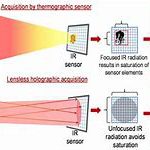Last Updated on 11 months by Francis
Contents
What is EMF?
EMF stands for Electromagnetic Fields. It is a type of energy that is created as a result of the movement of charged particles. EMF is everywhere, from the sun to the earth’s magnetic field to the electromagnetic fields created by electronic devices.
Types of EMF
There are two types of EMF – ionizing and non-ionizing. Ionizing EMF is the type that is harmful to humans and can cause cancer. Non-ionizing EMF is the type that is produced by electronic devices like cell phones, Wi-Fi routers, and microwave ovens. Non-ionizing EMF is generally considered safe for humans.
How is EMF used?
EMF has many applications in our daily lives, from powering our electronic devices to cooking our food.
Medical Applications
EMF is used in medical applications like Magnetic Resonance Imaging (MRI), which is a non-invasive diagnostic tool that uses strong magnetic fields to produce images of the body’s internal structures. EMF is also used in Transcranial Magnetic Stimulation (TMS), which is a non-invasive treatment for depression that uses magnetic fields to stimulate nerve cells in the brain.
Industrial Applications
EMF is used in industrial applications like welding, where it is used to create high temperatures to melt and fuse metals together. EMF is also used in heating, ventilation, and air conditioning (HVAC) systems, where it is used to power motors and fans.
Communication Applications
EMF is used in communication applications like radio and television broadcasting, where it is used to transmit information through the airwaves. EMF is also used in cell phone and Wi-Fi technology, where it is used to transmit information wirelessly.
Scientific Applications
EMF is used in scientific applications like spectroscopy, where it is used to measure the energy levels of atoms and molecules. EMF is also used in particle accelerators, where it is used to accelerate particles to high speeds.
EMF and Health
There is a lot of controversy surrounding the health effects of EMF exposure. While non-ionizing EMF is generally considered safe, some studies have suggested that prolonged exposure to electromagnetic radiation can lead to health problems like cancer, infertility, and neurological disorders.
Precautions
To reduce the risk of EMF exposure, it is recommended to limit exposure to electronic devices like cell phones and Wi-Fi routers. It is also recommended to use protective devices like EMF blockers and shields.
Misconceptions
There are many misconceptions surrounding EMF exposure, such as the belief that electromagnetic radiation from electronic devices can cause cancer. While some studies have suggested a possible link between EMF exposure and cancer, there is no conclusive evidence to support this claim.
EMF and Pregnancy
One area of concern when it comes to EMF exposure is pregnancy. While there is no conclusive evidence that EMF exposure can harm a developing fetus, some experts recommend that pregnant women limit their exposure to electronic devices and avoid using them while in bed.
EMF and Children
Another area of concern when it comes to EMF exposure is children. Children are more susceptible to the effects of EMF exposure because their bodies are still developing. Some experts recommend that children limit their exposure to electronic devices and avoid using them while in bed.
FAQs for the topic: emf is primarily used for which of the following material
What is emf?
EMF stands for electromotive force. It is the force that moves electrons around a circuit. Electromotive force is measured in volts.
What is the primary use of emf?
The primary use of emf is to power electrical devices. This can include everything from small household items like televisions and computers to larger industrial machinery.
Which type of materials make use of emf?
Materials that conduct electricity make use of emf. This includes metals like copper and silver as well as other materials like carbon and chemical compounds like acids and bases.
Can emf be generated by any material?
Technically, any material that conducts electricity can generate emf. However, certain materials are more effective at generating emf than others. Metals like copper and silver are highly conductive and are therefore more effective at generating emf.
Is emf safe?
EMF can be safe when used correctly. However, high levels of emf can be harmful to humans and can cause health problems like headaches, fatigue, and even cancer. It is important to follow safety guidelines and to limit exposure to high levels of emf.







